MN Roy: brief outline of life-events and thoughts- Part 02
Early years
The person whom we know and refer to as MN Roy or Manabendra Nath Roy was born as Narendra Nath Bhattacharya on 21 March 1887 at Arbella or Urbalia, then a village not far from Calcutta, in the Eastern part of 24 Parganas, Bengal.
He was the son of Dinabandhu Bhattacharya and Basantha Kumari Devi. The couple had eight children; and, Narendra was the fourth. The Bhattacharya-s were traditional Shaktha Brahmins following the hereditary profession of priests at the temple of Kseputeswari Devi located in Ksheput of Midnapore District.
Narendranath’s mother , Basantha Kumari Devi, was the niece of Dwarakanath Vidhubhushan (1820 – 1886), a Sanskrit scholar, who was the editor as also the publisher of the trend-setting Bengali-weekly-newspaper Somprakash . He was an associate of the legendary social reformer Iswar Chandra Vidyasagar. Dwarakanath Vidhubhushan was active in promoting women’s education. And, he established an English school called Harinavi Anglo-Sanskrit School , sometime before 1866 , in his hometown, in South 24 Pargana .

Another uncle of Basantha Kumari Devi was Pandit Shivnath Shastri, a rebellious scholar who tore off his sacred-thread to join the reformist Brahmo Samaj movement. He , along with Rajnarain Basu (grandfather of Aurobindo Ghosh), made one of the early attempts at forming a secret revolutionary group to fight against the British in Bengal. In 1861, they established an organization named Jatiya Gourab Sancharini Sabha for promoting ‘the sense of nationalism and self-reliance among the educated youth of Bengal’. Rajnarain Basu in his pamphlet, Anusthan Patra outlined the aims and objects of the organization. And, that led to establishment of Jatiya Mela in 1861.
It is said; Shivnath Shastri and Rajnarain Basu’s Anustan Patra provided the inspiration for Nabagopal Mitra (1840–1894) to launch Jatiya Sabha an organization dedicated for the social and cultural upliftment of Bengali youth. Later, the Jatiya Mela and the Jatiya Sabha came together, (renamed as Hindu Mela, in 1867), in order ‘to promote the national feeling, sense of patriotism, and a spirit of self-help among the Hindus; promotion of vernacular education and physical health’. It is said; the Hindu Mela had also its roots in the twin ideals of promoting a distinctive identity and self-reliance articulated in poet Isvarachandra Gupta’s (1812 – 1859) magazine Sambad Prabhakar ; and, his Bengali poetry composed in medieval style carrying multiple meanings.
Shivnath Shastri, naturally, exerted considerable influence on the younger members of Basantha Kumari Devi’s family.
Dinabandhu Bhattacharya, because of the family-circumstances, had to give up the priestly profession and take up the job of Sanskrit teacher at an English school in Arbella. It was in Arbella that Narendra Nath was born in 1887. The family then moved on to Chingripota during 1898 . And thereafter , it moved on to the nearby village Kodalia in Hooghly District during 1899. Dinabandhu Bhattacharya died in 1905 when Narendra Nath was about eighteen years of age.
Narendra Nath had his early schooling in Arbella where he attended the Jnan Vikasini School and the Harinavi Anglo-Sanskrit School. At home, he was tutored in Sanskrit by his father. It is said; Narendra Nath, after his schooling (when he about fourteen years), moved to Calcutta where he joined the newly established National University (started by Aurobindo Ghosh).

 Sri Aurobindo 1908
Sri Aurobindo 1908
After passing the Entrance Examination from National University, he is said to have studied Engineering and Chemistry in the Bengal Technical Institute. (But, the precise details , dates and veracity in this regard are not confirmed).
[ On 11th March, 1906, the National Council of Education, Bengal, or Jatiyo Siksha Parishad was founded to provide a platform for ‘a system of education – literary, scientific & technical – on national lines.
The institution started to work from 15th August, 1906 in a rented house on 191/1, Bowbazar Street with Sri Aurobindo Ghosh as Principal and Sri Satish Chandra Mukherjee as an Hon. Superintendent.
It is said; the Society for Promotion of Technical Education in Bengal, was later set up at the instance of Sri Taroknath Palit under patronage of Maharaja Manindra Chandra Nandy, Bhupendra Nath Bose, Nilratan Sircar and others who laid stress on the technical education alone. Under its management the Bengal Technical Institute was establish on July 25, 1906 with the objectives of spreading technical education among the masses. In 1910 the two societies merged.]
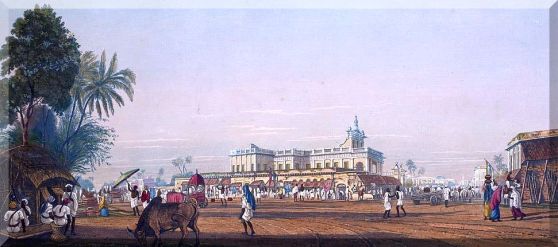
Before we move on further, let us take a look at the times when Narendra Nath was growing up.
The years after the failed upraise of 1857 plunged the whole of North India and Bengal in particular into ferment or a vortex. There was confusion, anarchy and oppression all around. The British, in their anger, went about ruthlessly crushing any idea or an activity with even a distant semblance of revolt or nationalism.
The long and severe fighting left indelible marks. The over-confident liberalism of the British, who had believed that they were bestowing the blessings of civilization on a grateful India quickly evaporated. India had proved to be ungrateful and hostile.

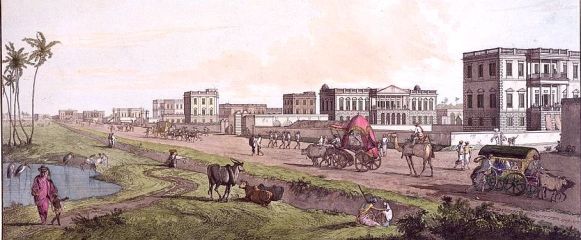
As a part of their repression, the British systematically crippled the domestic economy by destroying the handicraft and village industries; and , they deliberately restricted the growth of agriculture and domestic industries. The British attempted reorienting the entire Indian economy to serve as a supplier of raw material to their industries in England. That resulted in impoverishment and desperation of the Indian peasantry. That pain and frustration was exacerbated by the increased burden of land revenue.
Lord Curzon , who took over as the Governor General and Viceroy of India in January 1899 , began his rule by introducing number of repressive measures and unpopular enactments , with a view to curtailing the already meager rights of the common people ; and , to effectively nip any budding political movement .
Born out of disillusionment, poverty, unemployment and humiliation, the mass unrest and fermenting of rebellion was the inevitable.
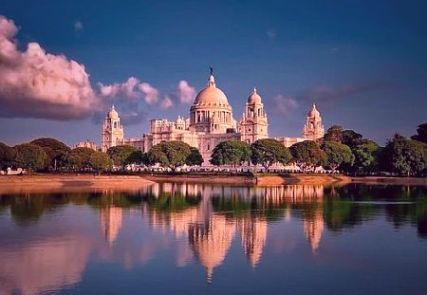
In order to assert the establishment of the supremacy of the British Monarchy in in India, Lord Curzon caused to erect a magnificent Memorial (between 1906 and 1921) in honor of the deceased Queen Empress Victoria. He declared :
“Let us, therefore, have a building, stately, spacious, monumental and grand, to which every newcomer in Calcutta will turn, to which all the resident population, European and Native, will flock, where all classes will learn the lessons of history and see revived before their eyes the marvels of the past.”
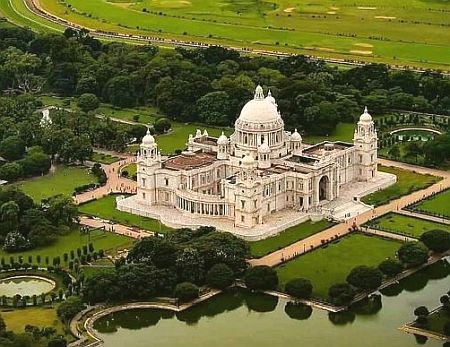
**
Amidst such encircling chaos, the elite, the intelligentsia and social reformers of Bengal were forming their own groups and societies. At the other end, were the groups of revolutionaries inspired by the writings of Bankimchandra Chattopadhyaya and Swami Vivekananda. They ignited the ideals of self –respect, nationalism and self-rule , free from oppression.
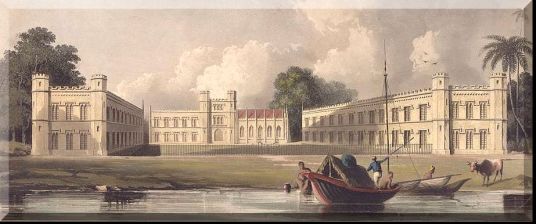
[Prof. Hermann Kulke and Prof. Dietmar Rothermund in their A History of India (Rutledge, London, Third Edition 1998) write:
The challenge of imperial rule produced India’s nationalism, which raised its head rather early in the nineteenth century. Among the new educated elite there were some critical intellectuals who looked upon foreign rule as a transient phenomenon. As early as 1849 Gopal Hari Deshmukh praised American democracy in a Marathi newspaper and predicted that the Indians would emulate the American revolutionaries and drive out the British. Such publications, for which the author would have been prosecuted for sedition, only a few decades later, were hardly taken note of by the British at that time. Similarly, the political associations in Bombay, Calcutta and Madras submitted lengthy petitions to Parliament in 1853 when the renewal of the charter of the East India Company was due; these did not attract much attention either, although they contained, among other things, strong pleas for democratic rights and a reduction of the land revenue.
The Mutiny of 1857 then alarmed both the British and the Indian educated elite. The British became cautious, suspicious and conservative; the Indian elite lapsed into a prolonged silence
Liberal nationalists of the educated elite revived vocal political activity in the 1870s. They belonged to a new generation for whom the Mutiny of 1857 was only a vague childhood memory, whereas their experience in England— where many of them had gone for higher studies—had stirred their political consciousness. The old and long dormant associations of the 1850s were now superseded by new organizations of a more vigorous kind. Chief among them were the Indian Association established in Calcutta in 1876 and the Poona Sarvajanik Sabha which was founded in 1870, by . S. H. Chiplunkar and Mahadev Govind Ranade. The latter, Mahadev Govind Ranade, the young judge posted in Pune in 1871, emerged as the leading spirit of the Sarvajanik Sabha.
[ This organization is said to be a precursor to the Indian National Congress, which started with its first session from Maharashtra . In 1875 , the Sabha sent a petition to the House of Commons demanding India’s direct representation in the British Parliament. The Pune Sarvajanik Sabha provided many of the prominent leaders of national stature to the Indian freedom struggle including Bal Gangadhar Tilak.]
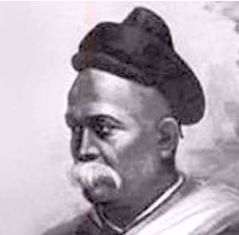
Vedanta philosophy was certainly an inspiration for the national revolutionaries, but it had one major disadvantage: it was originally aimed at the liberation of the soul by meditation and by the renunciation of worldly preoccupations. Therefore it was necessary to emphasize the concept of Karma yoga, which implies that action as a sacrifice—as an unselfish quest for right conduct—is as good as renunciation. The crucial proviso is that one should not expect any reward or benefit from such action and must remain completely detached. In this way active self-realization rather than passive contemplation could be propagated as the true message of Vedanta philosophy.
Swami Vivekananda was the prophet of this new thought. He impressed the Western world when he propounded this message at the World Parliament of Religions in Chicago in 1894; on his return to India in 1897 following his spiritual conquest of the West, he greatly stimulated Indian nationalism. The British rulers had usually looked down on Hinduism as a ragbag of superstition; Vivekananda’s rehabilitation of Hindu thought in the West was therefore considered to be a major national achievement.
Vedanta philosophy and Karma yoga were, of course, of importance only to members of the educated elite who had looked for a new identity and found that borrowed British liberalism was not enough of an inspiration for Indian nationalism.
The monism of Vedanta philosophy also provided these elite with an ideological justification for assuming the leadership of the masses in the spirit of national identity. For political mobilization this imputed identity was, of course, insufficient and attempts were therefore made to communicate with the masses by way of the more popular symbols of folk religion.

In Bengal the cult of the goddess Kali or the ecstatic mysticism of the Vaishnava saints provided symbols for an emotional nationalism.
The hymn of the Bengali national revolutionaries, ‘Bande Mataram’ (‘Bow to the Mother’), alluded to an identification of the mother goddess with the motherland.
In Maharashtra, Bal Gangadhar Tilak organised festivals in honor of the popular god Ganapati, as well as of the great hero Shivaji, whose fight against the Great Mughal was taken as analogous to the fight against British foreign rule.
And, in Punjab the Baishaki festival , in a similar manner, was used to mobilize the Sikhs and Hindus .]
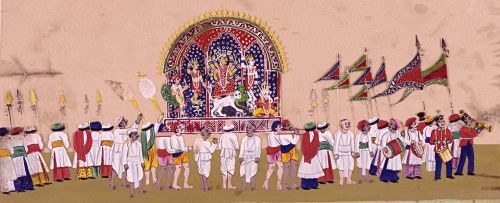
Bankimchandra Chattopadhyaya raised Nationalism to the level of religion by identifying the Motherland with the Mother-Goddess. The tremendous impact and thrilling upsurge that Anandamath and Bandemataram had on the Indian National Movement is indeed legendary. Bankimchandra’s immortal song Bande Mataram (Hail to the Mother) set to music by the young Rabindra Nath became India’s national song, and the voice of the Indian people fighting against colonial rule.
Aurobindo Ghosh and other revolutionaries acknowledged Bankimchandra as their political Guru. And, Aurobindo, in turn, wrote pamphlet Bhawani Mandir (Temple of Goddess Bhavani) , outlining the ideals and methods of the impending revolution. That was followed by Bartaman Rananiti (Rules of Modern Warfare), detailing the tactics , particularly of the guerrilla type . The whole of India and Bengal revered Bankimchandra; and, following his ideal, regarded him as ‘the inspirer, a new spirit leading the nation towards resurgence and independence’. Anandamath created, in its wake, a class of patriots who willingly vowed to sacrifice their life for the cause of Motherland. The women accepted the idea of their men renouncing their worldly life and turning Sadhus in service of Motherland.
Narendra Nath even as child growing up in the villages of Changripota, Kodalia and surrounding areas known as the breeding ground of revolution had been exposed to the ideas of nationalism and freedom. His mother’s uncles were active reformists and nationalists. Their zeal did rub-off on the young Naren.
Samaren Roy in his M.N. Roy: A Political Biography mentions a certain Sivnarain Swami (believed to have been a fugitive of the failed revolt of 1857) trying to enroll and train young men to fight the British with arms.
It is said; Sivnarain Swami taught his young wards Yoga, revolutionary ideals as also lathi and sword-play. Naren was one of his ardent disciples and a fast learner.
It is believed that Naren, his cousin Avinash Bhattacharya and friend Harikumar Chakravarti along with Satcowri Banerjee; the brothers – Saileshvar and Shyamsundar Bose; and, two other cousins of Naren , viz. Phani and Narendra Chakravarti, formed their own small group at Changripora. (This group later took a bigger role in organizing an armed uprising in the wake of World War One.)
It is said; a mysterious Mokshadacharan Samadhyayi (Mokshada Charan Bhattacharji or Khasnabis), a resident of the neighboring Field and Academy Society (founded by Brahmabandhab Upadhyay); and, an active organizer of a secret organization started frequenting Naren’s group. This group consisting, apart from Naren, Harikumar Chakravarti, Saileshwar Bose, Satkari Banerji and Phani Chakravarti (Naren’s cousin) had started a powerful association. And, some of them had earlier worked in Barin Ghosh’s bomb-factory at Deoghar.
[About his early years as a boy growing up in rural Bengal, Roy wrote in in Memoirs:
When I began my political life, which may end in nothing, I wanted to be free. .. In those days, we had not read Marx. We did not know about the existence of the proletariat. Still, many spent their lives in jail and went to the gallows. There was no proletariat to propel them. They were not conscious of class struggle. They did not have the dream of Communism. But they had the human urge to revolt against the intolerable conditions of life under colonial rule. They did not know how those conditions could be changed, but they tried anyhow. I began my political life with that spirit, and I still draw my inspiration from it rather than from the three volumes of Capital or three hundred volumes by Marxists.]
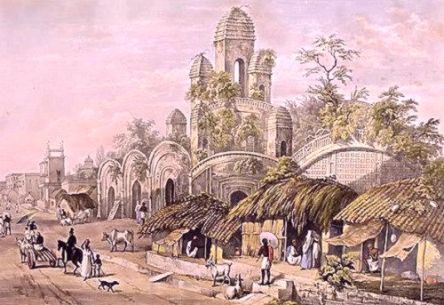
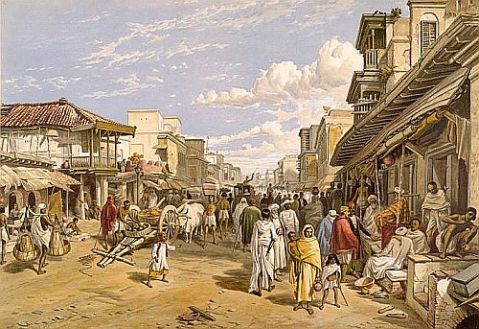
Calcutta- Chitpore Road-1848/1867
Calcutta – the years of Insurgency (1905 – 1915)
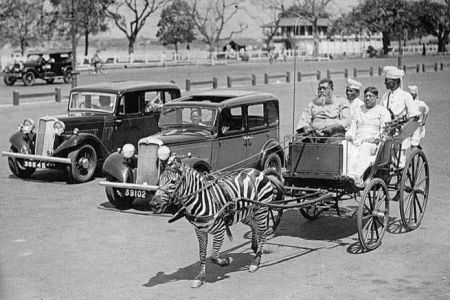
1905 was an eventful year in Narendranath’s life. He lost his father Dinabandhu Bhattacharya in that year. It was the year in which he became active in Calcutta. It was also the year in which Lord Curzon took the ill-fated decision to partition Bengal into two halves. The whole of Bengal vehemently opposed Curzon‘s ploy of ‘divide and rule’; and rose up in revolt. The resistance to the idea of partition took on the forms of Nationalism and Terrorism, which almost shook the foundation of the British Empire in India. The British had to eventually shelve the idea of partitioning Bengal.
[Curzon’s imperious and autocratic character, however, created conflicts. His resignation in 1905 resulted from an internal political dispute in which he ultimately refused to follow orders from his superior in London, the secretary of state for India. His arrogance and racism made him contemptuous of English-educated Indians—he once called the Indian National Congress an “unclean thing”—and his government took a number of actions that antagonized elite Indians,including reducing the number of Indians on the municipal boards of cities and passing the Universities Act in 1904, a series of measures that tightened government controls over universities and their affiliated colleges in order to control student protests.
But, Curzon’s most provocative government action, however, was undoubtedly the partition of Bengal.]
But, the revolt against partition of Bengal had awakened the common people and ignited in their hearts the zeal for achieving a Free India. It inspired the younger generation of Bengal to take up armed struggle against the British rule. The groups of young men, organized or otherwise, began to strike blow after blow against the established authority.
Narendra Nath was caught up in both the phases of the uprising. It is said; while he was in school at Kodalia (1904 ?) he tried to organize a meeting to protest against the proposed partition Bengal. On being denied permission for holding the meeting within the School premises, Naren and his seven friends including Harikumar Chakravarti and Saileswar Bose addressed a small gathering outside the school. For which act of indiscipline , they all were punished; but, later were allowed to appear for their examinations.
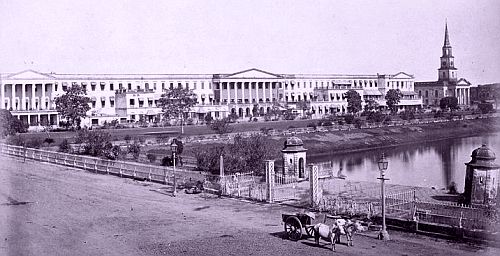
After he moved to Calcutta in 1905 and took active part in the Anti-partition movement, Naren was drawn into the very core of the revolutionary movement.
While in Calcutta, Naren and Harikumar used to attend the discourses on the Bhagavad-Gita given by Swami Saradananda (born as Sarat Chandra Chakravarty) of Sri Ramakrishna Mutt at Belur.

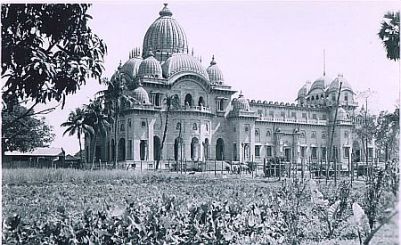
There , they were introduced to Satish Bose who was said to be the Secretary of the Anushilan Samithi , a revolutionary body established in Calcutta during 1902 for ‘ the physical , mental and moral re-generation of the Bengali youth’. Naren and Harikumar, thereafter, became active members of the Anushilan Samithi; and , during the next two years – 1905 and 1906 – lived in the Central Office of the Samithi at NO. 49 Cornwallis Street, Calcutta (now named Bidhan Sarani, Kolkata).

There at the Samithi, Naren came in close contact with a leader popularly known as Barin Ghosh. He was Barindra Ghosh or Barindranath Ghose (5 January 1880 – 18 April 1959) younger brother of Sri Aurobindo Ghosh. Barin Ghosh was a journalist publishing and editing a Bengali weekly Jugantar (New Era); and, a revolutionary heading a group also named Jugantar. The revolutionary outfit Jugantar was, in fact, formed out of the inner circle of the Anushilan Samithi; and was actively involved in terrorist activities. It appears, the code-name that Barin Ghosh used for his revolutionary operations was ‘Golghar‘ (a monument in Patna, Bihar).
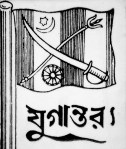
It is said; Naren helped Barin Ghosh in looking after the magazine Jugantar; and , he also wrote articles for the magazine. One of his articles was Bharater Raja Ke ? (Who rules India?). The article, it is said, concluded with the assertion ‘it is only the people of India who can choose their ruler. British rule in India was established by force and is maintained by force, therefore, it can and will be overthrown only by a violent revolution. We are not in favor of resorting to violence if it can be helped; but for self-defense, the people of India must adopt violent means without which the foreign domination based upon violence cannot be ended.”
Naren also wrote a pamphlet in Bengali, titled Mayer Dak (Mother’s call), which later was classified by the Bengal police as ‘seditious’.
In the initial stages, the Samithi asked Naren and Harikumar to engage themselves in organizational work and social-service. On being satisfied of their performance, they were admitted into the inner circle of Anushilan Samithi. Thereafter , they were trained in pistol shooting and bomb-making.
 It was during his training period that Narendra Nath came to know Jatindranath Mukherjee (7 December 1879 – 10 September 1915) , fondly called Bagha Jatin (Tiger Jatin – as he was said to have killed a tiger in close combat). He was the principal leader of the Jugantar , the central association of revolutionaries fighting the British rule in India. He was at that time working as a shorthand clerk in the office of Finance Secretary, Bengal Government. But, Jatin was deeply involved in the revolutionary movement. He was affectionate by nature; had an attractive personality and could make friends easily. He gathered around him number of young and enthusiastic revolutionaries. Naren , who also was drawn to Jatin, came to like him immensely; and, he accepted Jatin as his leader. Later, the two worked together in a number of revolutionary ventures.
It was during his training period that Narendra Nath came to know Jatindranath Mukherjee (7 December 1879 – 10 September 1915) , fondly called Bagha Jatin (Tiger Jatin – as he was said to have killed a tiger in close combat). He was the principal leader of the Jugantar , the central association of revolutionaries fighting the British rule in India. He was at that time working as a shorthand clerk in the office of Finance Secretary, Bengal Government. But, Jatin was deeply involved in the revolutionary movement. He was affectionate by nature; had an attractive personality and could make friends easily. He gathered around him number of young and enthusiastic revolutionaries. Naren , who also was drawn to Jatin, came to like him immensely; and, he accepted Jatin as his leader. Later, the two worked together in a number of revolutionary ventures.
***
[I think we should digress here; and, talk a bit about Anushilan Samithi and Jugantar before going further.
Anushilan Samithi and Jugantar

Anushilan Samithi, just as any other organization, was a product of its times. It was largely inspired by Swami Vivekananda’s call for developing a strong spine in Hindu community. And, it was also helped by a growing sense of Indian identity among the young student fraternity in Calcutta. Encouraged by Sister Nivedita and Swami Saradananda of Sri Ramakrishna Mutt , Satish Chandra Basu founded the Anushilan Samiti in early 1902. Pramathanath Mitra (30 October 1853-1910) was one of the earliest founding members of the Samiti. Another major initiator of this association was Chittaranjan Das. He and Aurobindo Ghosh became vice-presidents ; and, Surendranath Tagore was the treasurer of Anushilan Samiti.


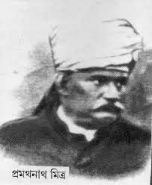
Its office was set up on 24th March 1902 , at 12 Madan Mitra Lane, Calcutta.

Its name was inspired by the term Anushilan-Tattva (The principle of discipline) used by Bankim Chandra Chattopadyaya as a title to one of his works. The basic theme of Anushilan was discipline; physical and moral regeneration of Bengali youth. The early Anushilan Samiti drew its members largely from the young student fraternity in Calcutta. It initially started as a sort of school (akhadas) for teaching lathi and swordplay, boxing, wrestling, and other exercises, apart from inculcating moral and spiritual values.
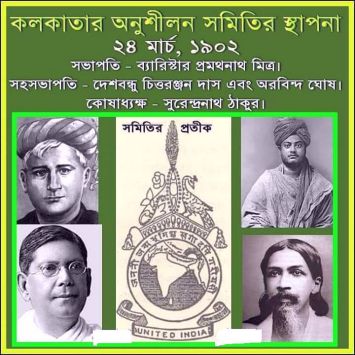
In a short while, it grew into a cross between a society for rendering social service and a secret outfit teaching the forbidden art of bomb-making. It developed into an inner or underground wing which became the center of the revolutionary activities carried out all over Bengal. Rigorous rules of admission were observed; strict discipline was enforced; and , utmost secrecy was maintained in its operations.
In course of time , many other branches of the Samiti were set up in other parts of India. The branches functioned mostly as independent bodies, pursuing their own targets; and, employing their own strategies and tactics.
The most active of such units was the Anushilan Samithi of Dacca in East Bengal. Organizationally, the Dhaka unit of the Anushilan Samiti was an independent organization under the management of Pulinbihari Das. But, it had good connections with Pramathanath Mitra of the Calcutta-Anushilan Samiti. Due to the organizational skills of Pulinbihari Das, the Dhaka Anushilan Samiti spread rapidly and was in a leading position.
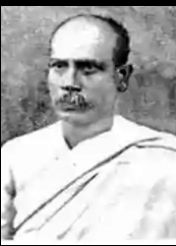
However, because of personal prejudices among the leaders of the Samiti-s , a sort of jealousy and distrust about each other’s motives spread among the Samiti-s. Its relation with the Jugantar Dal became rather weak. Even the Calcutta wing suffered setback following misunderstandings between its leaders: Barin Ghosh and Jatindranath Bannerjee.
The Samiti-s were fairly active; and the Bengal Police , suspicious of their nefarious activities, kept a watch over them. But, they could not carry out any arrests because , outwardly and noticeably , they were engaged in social service; and , also because respectable leaders like Chitta Ranjan Das were associated with the Samitis.
By about 1908, the Bengal Police had gathered enough evidence to charge the Samiti-s with terrorist activities like dacoity, looting and murder. The Samiti offices and other work places were raided; arrests were made ; and, the outfits were declared unlawful. The Calcutta Samiti was declared illegal in 1908; and , the Dacca Samiti was closed down in the following year.
 In the meanwhile, Barin Ghosh (younger brother of Aurobindo Ghosh) , around 1906, began organizing volunteers in support of agitations to be carried out as a part of the Freedom movement . His efforts drew those youth who were highly motivated and fired by the desire to secure Indian independence. The volunteers were trained in physical exercise, sword and lathi play; and were instilled with devotion towards the Mother land.
In the meanwhile, Barin Ghosh (younger brother of Aurobindo Ghosh) , around 1906, began organizing volunteers in support of agitations to be carried out as a part of the Freedom movement . His efforts drew those youth who were highly motivated and fired by the desire to secure Indian independence. The volunteers were trained in physical exercise, sword and lathi play; and were instilled with devotion towards the Mother land.
Aurobindo had returned to Bengal in 1906; and, in 1907 he, with the help of his brother Barin and the leader Bipin Chandra Pal, started a radical Bengali nationalist publication called Jugantar (the Change) , along with its English counterpart Bande Mataram . The journals gradually grew to acquire a mass appeal in Bengal through their radical approach and message of revolutionary programs .Another publication, Mukti Kon Pathe (Which way lies Salvation?), exhorted the Indian soldiers to participate in revolutionary activities.


Later, the inner group of the Calcutta unit of the Anushilan Samithi adopted the name Jugantar to carry out acts of political terrorism. Barin Ghosh had also set up a bomb-factory at a garden house in Manicktolla, a suburb of Calcutta.
Among the early recruits were Rash Behari Bose, Jatindranath Mukherjee, and Jadugopal Mukherjee, all of whom later emerged as major freedom- fighters and leaders.
[ It appears , during those days, there were similar such other Samiti-s like the Swadesh Bandhub Samiti, the Barathi Samiti, and Surhid Samiti etc.]
On December 1907, an attempt was made on the life of Sir Andrew Fraser, Lieutenant Governor of Bengal.

And, in December 1907, C C Allen , District Magistrate of Dacca was killed
The major act of terrorism carried out by Jugantar was the attempted murder of Kingsford, the-then District Judge of Muzaffarpur, on 30 April 1908. But, sadly, the carriage in which Mr. Kingsford was supposed to be travelling had actually in it Mr. and Mrs. Kennedy who were returning home from the club. That misadventure led to the arrest of Kudhiram Bose and others who were tried in what came to be known as the Alipore Bomb Conspiracy Case.
**
 The bomb used by the young Kudhiram Bose at Muzaffarpur was traced to the bomb-factory set up at the Muraripukur garden house in the Manicktolla suburbs of Calcutta. In the FIR filed by the police , Barin Ghosh and Aurobindo Ghosh , along with thirty-two others, were named as accused in the conspiracy. The historical trial started on 21 May 1908 . Among those accused who were found guilty, Kudhiram Bose , who just had turned 18, was sentenced to death ; and, was executed on 11 Aug 1908 . Another accused , Prafulla shot himself dead.
The bomb used by the young Kudhiram Bose at Muzaffarpur was traced to the bomb-factory set up at the Muraripukur garden house in the Manicktolla suburbs of Calcutta. In the FIR filed by the police , Barin Ghosh and Aurobindo Ghosh , along with thirty-two others, were named as accused in the conspiracy. The historical trial started on 21 May 1908 . Among those accused who were found guilty, Kudhiram Bose , who just had turned 18, was sentenced to death ; and, was executed on 11 Aug 1908 . Another accused , Prafulla shot himself dead.
And, Barin Ghosh was deported for life to the Cellular Jail in Andaman, where he remained until declaration of a general amnesty in 1920. His elder brother, Aurobindo Ghosh was acquitted of charges (along with 16 others); and, he developed a new outlook of life and grew spiritual.

In retaliation to the outcome of the Alipore Bomb Case, the Jugantar carried out series of political assassinations of those zealous Indian officers involved in the investigations pertaining to the cases ; or those assisting the prosecution; or those who had turned into approvers ; and, as also those helping the police.

In Nov 1908, Nandalal Banerjee, an officer in the Intelligence Branch of Bengal Police, who arrested Kshudiram Bose, was shot dead.
On February 10, 1909, Ashutosh Biswas, who conducted the prosecution of Kanai Lal Datta and Satyen Bose for the murder of Naren Gosain (a revolutionary turned approver), was shot dead by Charu Basu in the Calcutta High Court premises.
Samsul Alam, Deputy Superintendent of Police, who conducted the Alipore Case was shot and killed by Biren Dutta Gupta on the stairs of Calcutta High Court building on January 24, 1910.
Thereafter, Charu Basu and Biren Dutta Gupta , who were arrested and tried , were hanged to death.
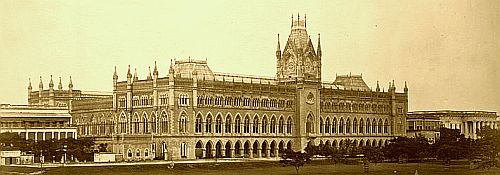
[It is said; about 112 dacoities , involving nearly seven lakhs of Rupees , were carried out during the years 1907-1910 .The more adventurous of those was the dacoity at Barha, where the revolutionaries escaped in boats with Rs.25,000. The other was the one committed with the help of a taxi in Calcutta, in broad daylight, robbing Rs.18,000 from a Hackney carriage. And, another was the robbing Rs. 23,000 from a train.]
With the deportation of Barin Ghosh and the retirement of Aurobindo Ghosh from politics, followed by ban on Anushilan Samiti, there was considerable disruption in the revolutionary movement ; and, it fell into deep disarray.
Bagha Jatin who had escaped arrest in the Alipur case, took over the leadership of the Jugantar Party; and, tried to revitalize the links between the central organization in Calcutta and its branches in Bengal, Bihar, Orissa and in United Provinces. He also tried to locate hideouts (safe-houses) in the Sunder-ban swamps for members who had gone underground. However, with the heightened vigilance of the government agencies, the Jugantar group and the Dhaka Anushilan group had to lie low. The revolutionary activities in Western Bengal , practically , came to a stop from 1910 . And, thereafter, the center of revolutionary activities shifted to Eastern Bengal.
But with the arrest and deportation of Pulin Bihari Das , even the the Dhaka Samiti had to go underground. Later, Narendra Mohan Sen, Trilokinath and Parul Chandra tried to re-group the Dhaka Samiti. But, nothing much came of their efforts. Eventually, the Dhaka Samiti decided not to collaborate even in what came to be known as the Indo-German plot.
By 1920, Samiti was struggling to remain relevant in the face of challenges like British crack down; condemnation of its violent ways by Gandhi-controlled Congress; loss of leaders like Sri Arobindo Ghosh and CR Das; and, its own infighting and competition with a splinter group, Jugantar.
Jatin Mukhejee ,along with a number of fellow-revolutionaries was killed in a fire-fight with Police forces at Balasore, in present day Orissa. This effectively brought Jugantar to an end during the first war. The passage of the Defence of India Act 1915 led to widespread arrest, internment, deportation and execution of members of the revolutionary movement. By March 1916, widespread arrests helped Bengal Police crush the Dacca Anushilan Samiti in Calcutta. Eventually the Samiti dissolved, before the Second World War, into the Revolutionary Socialist Party.


Before ending on this note on the Samiti, I would like to mention two interesting sidelines that emerged as the outcome or the by-product its revolutionary activities.
Many militant revolutionaries were arrested and thrown into prison following crack down on the Anushilan Samiti-s and the Jugantar. The prison inmates were disgusted with the approach of the Congress and Gandhi. They found Gandhi’s non-violent ways deplorable while the British continued with repression. Many started wondering whether the mass appraisal as in Russia would be a more viable option to secure India’s freedom. Many were attracted to Bolshevik ideology and found the Marxism as new road dearer to their heart.
The British authorities in Calcutta were, of course, not amused with this new development. However, later, they could see in it a window of opportunity to wean away the revolutionary from the path of terrorism. It dawned on them that the communist ideology (as practiced then) did not approve of terrorist violence; but aimed for a mass revolution that would succeed in the long run. The British surmised that the communist ideology might come in handy to leave the British in India out of the harm’s way until the revolution, if any, materializes (hoping that such an eventuality might never occur). The revolutionary prisoners were then fed with Marxist literature.
The British ploy did succeed to an extent. A number of prisoners who went in as terrorists came out as communists. And some of them joined MN Roy after he set up the Communist Party of India in 1921. Thus, one could possibly say that, historically, the Communist movement in India grew out of national environment and disillusionment of the youth with Congress ; followed by disappointment over Gandhi’s sudden withdrawal of the non-cooperation movement in 1922.
While some joined MN Roy’s, there was also a group among those released from long jail sentences that did not like to join Roy. That group called itself as: Anushilan Marxists. They also had sharp political differences with the Communist Party in India.
The Anushilan Marxists, not left with many options, joined the Congress Socialist Party (CSP) , but keeping a separate identity within the Congress party, with a resolve to transform the Indian National Congress into an anti-imperialist front.
The Anushilan Marxists were soon disappointed by developments inside the CSP. The differences came to a head when at the Tripura session of the Indian National Congress (1939) the Anushilan Marxists of the CSP failed to expressly support Subash Chandra Bose against the resolution to give Gandhi the veto over the formation of the Congress Working Committee, although the Anushilan Marxists had earlier supported Bose in the presidential election . This was seen as an act of ‘betrayal perpetuated by the CSP leadership. The rank and file of the Anushilan Marxist faction of CSP resigned in protest against the act of bad faith by the party leadership.
Soon after the Tripura session, Bose resigned as Congress president and formed the Forward Bloc. Bose wanted the Anushilan Marxists to join his Forward Bloc. But the Anushilan Marxists, although supporting Bose’s anti-imperialist militancy, considered that Bose’s movement was nationalistic and too eclectic.
The CSP dropped ‘Congress’ from its nomenclature in February-March 1947; and formally severed its connections with the Congress in 1948.
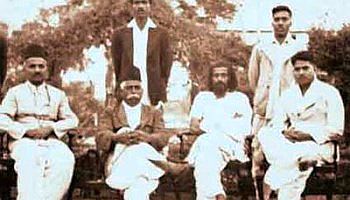
The other interesting sidelight is that the Rastriya Swayamsevak Sangha (RSS) that caused much heart-burn among leftist intellectuals (some of them are offended by its very existence) actually had its root in Anushilan Samiti. RSS’s founder Guru, Dr. Keshava Baliram Hedgewar (April 1, 1889 – June 21, 1940) was, at one time, a member of Anushilan Samiti and Jugantar .
Dr. KB Hedgewar after successful completion of Medical degree (L.M. &S) from the National Medical College, Calcutta, in June 1914, was drawn towards the secret revolutionary organisations like the Anushilan Samiti and Jugantar that were then active in Bengal. He joined the Samiti; and, was its member for several years.
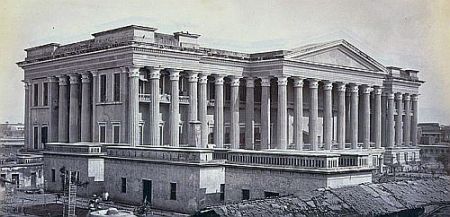
After returning to Maharashtra in 1916, Dr. Hedgewar decided to renounce both married-life and medical practice; and, to dedicate himself unequivocally to the freedom movement. In 1920 he worked tirelessly in Gandhi’s noncooperation campaign, and was sent to prison for his efforts. Dr. Hedgewar occupied his time in jail with spinning and reading the Bhagavad Gita, the book of choice among imprisoned Indian freedom fighters. Released in 1922, he gradually withdrew from the Indian National Congress. Dr. Hedgewar came to believe that only Hinduism could motivate the population to achieve independence and reform society.
Dr. Hedgewar founded the RSS in Nagpur, Maharashtra in 1925, with the intention of promoting the concept of the Hindu nation. The RSS (Rastriya Svayam-sevak Sangha) was, thus, born as a child of the Freedom Movement.
[Even prior to the founding of RSS , there existed a close collaboration between the militant nationalist groups of Bengal and that of Maharashtra. On April 2, 1908 Anderson the Assistant Collector of Pune was assaulted. The revolutionary movement in Maharashtra reached its height in 1909, when on November 13, two bombs were thrown at the Viceroy while he was in Ahmedabad; but, the bombs failed to explode. And again , on December 21, 1909 Jackson , District Magistrate of Nasik, was shot dead by Ananat Lakshman Kanhere . In this Nasik Conspiracy Case , Kanhere along with his associates – Karve and Deshpande – was sentenced to death.
But, the movement in Maharashtra suffered because of the lack of a central controlling agency; and want of funds. Different unorganized groups carried out sporadic unplanned attacks. ]
The basic theme of RSS, just as Anushilan was, devotion and dedication to Mother land; discipline; physical and moral regeneration of the Indian youth. His ideals were born out of his reading of the Gita; which were briefly : Each person has a divinely implanted dharma, a set of duties and responsibilities; To act in accordance with that Dharma contributes to the well-being of society; To act according to Krishna’s teaching of Nishkama karma (action without desire) ,with detachment and humility.
And, just as Anushilan Samiti, the RSS too drew its members largely from the young student fraternity. It also tried to impart to its followers training in lathi and swordplay, boxing, wrestling, and other exercises, apart from inculcating moral and spiritual values; and, above all devotion and dedication to Motherland. For Dr. Hedgewar, the path of karma yoga is best when combined with the discipline of devotion. Dr. Hedgewar designed RSS training to engage its members in both physical and moral cultivation that would make them effective karma yogins.
It is said; Dr. Hedgewar’s own involvement with the Anushilan Samiti helped RSS in maintaining secretiveness, in carrying out its operations and in forging its method of communication through personal emissaries rather than paper documents.
Thus , the two extremes of the Indian politics – the right wing RSS and the Left wing Marxists- both sprouted of the same gun- barrel primarily to secure India’s freedom. Later, the focus of both the organizations diffused and their interests strayed away into other fields.]
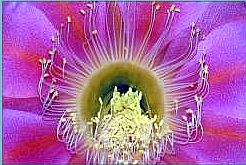
To return to Narendra Nath, he committed his first dacoity on 6 Dec 1907 at the Chingripota Railway Station to secure funds for his revolutionary outfit led by Jatin Mukherjee. It is said the attack was carried out under the leadership of Mokshadacharan Samadhyayi. The Station Master was assaulted and the money in the safe was taken away. Naren absconded from the scene; but was later arrested when he came home to visit his mother who was in sick bed. (She died , thereafter, in early 1908).
At the time he was arrested, Naren was carrying with him a copy of Barin Ghosh’s Bartaman Rananiti (strategy for the present-day warfare) as also his own manuscript titled Mayer Dak (Mother’s call) . When the case came to trial, the social activities he had undertaken helped him to secure bail. In his bail petition filed before the Police Magistrate of Sealdah, Calcutta, his lawyer (appointed by Jatin) Babu Promotho Nath Mukherjee, stated: ‘the youth was a student of the Bengal Technical Institute; and passed the Entrance Examination* of the National Collage and got a medal”. (* which is equivalent to the present-day SSC or the tenth standard)
After his release, he found the situation of the Samiti and Jugantar had changed a great deal. With the deportation and long imprisonment of Barin Gosh ; the withdrawal of Aurobindo Ghosh from all types of political activities; with the ban imposed on the Anushilan Samiti ; and, with the imprisonment or disappearance of the revolutionaries , the entire movement had come to a virtual halt. It was at this time, Naren and Jatin Mukherjee began re-building the group and try to secure funds for the group’s activities. It was then that Naren and Jatin came closer; and developed strong friendship. From here on , Naren rose in the hierarchy of leadership; and began working hard to re-group and co-ordinate the party workers.
In the process, Naren set up two fake units to rise and distributes funds. The one was a welfare organization called Saramajibi Samabhaya that was headed by Amarendra Nath Chattopadyaya. And, the other was Business Company M/s. S.D. Harry and Sons from where Harikumar Chakravarthy (Naren’s close friend) operated.
Apart from that, Naren resumed his political dacoity. It is said; following 1907, Naren committed several robberies; but, no specific information is available about them. One, about which some information is available, is the robbery he committed on 25 April 1909 at Neera, near the Diamond Harbour. And, that yielded about Rs.2, 000.
It is suspected that it was in fact Naren who, in November 1908, shot dead Nandalal Banerjee an officer of the Intelligence Branch of Bengal Police, who arrested Kshudiram Bose. But, his name, somehow, did not figure in the charge sheet.
But , Naren, Jatin Mukherjee and 45 others were arrested on the charges of committing murder of Shamsul Alam , an Intelligence Officer , who was preparing to link up all the robberies and murders committed by the revolutionary groups, consolidate the charges, and bring them all to trial in a single case. It is said; the murder was actually committed, on January 24, 1910, by Biren Datta Gupta, a follower of Jatin Mukherjee.
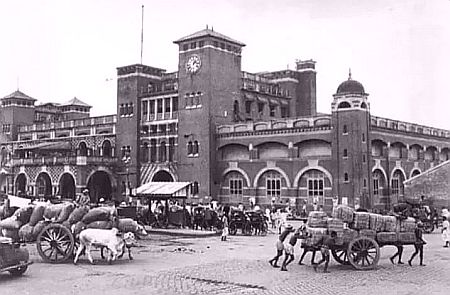
The case gained notoriety as Howrah-Sibpur-Conspiracy. The case was framed fairly quickly; and, as many as 47 accused were arrested on 29 Jan 1910. And, the trial commenced on 4 Mar 1910. The case again came up before the Special Tribunal of the High Court on 20 July 1910. The prosecution tried to cover under a single case varieties crimes committed against the Government of His Majesty the King Emperor in different parts of British India. It attempted to bring under one case heterogeneous gangs of thieves, murders, motivators, advisers, leaders, ordinary members, supporters and such others. But, the prosecution was unable to link, beyond doubt, the activities of the various Samiti-s and other outfits operating in different parts of India.
Because of that and because of Jatin Mukherjee’s tactic of decentralizing the Samiti structure, the case fell through for want of clinching evidence. Of the 47 accused, 33 were acquitted; and had to spend just over a year in jail. Naren and Jatin were one among them.
After the case was over, the newly appointed Viceroy Lord Hardinge wrote :
“As regards prosecution, I (…) deprecate the net being thrown so wide; as for example in the Howrah Gang Case, where 47 persons are being prosecuted, of whom only one is, I believe, the real criminal. If a concentrated effort had been made to convict this one criminal, I think it would have had a better effect than the prosecution of 46 misguided youths.”
Following the Howrah-Sibpur case, charges were framed against Narendra Nath in six cases of dacoities committed during 1908 and 1909. The Chief Justice did not think adequate evidence was not produced to prove the involvement of the accused.
While in prison during the trial of Howrah-Sibpur case, Jatin, Naren and others of the group drew up plans for armed insurgence.
As directed by Jatin the leader, Naren wandered about the country in the guise of a Sanyasin. It is said; he visited places like Varanasi, Allahabad, Mathura and Agra. The familiarity with the country helped him in his organizational work; because, by then the revolutionary activities had spread to other parts of India as well. Young men trained in Bengal were sent for action to the distant regions of Maharashtra, Punjab Madhya Pradesh and Madras. They were even supplied with pistols and bombs. Attempts were also made to contact rebel groups in Canada, France, USA, Burma and Far East.
Wider network and expanded range of activities demanded more arms and abundant funds. The task of raising these resources was entrusted to Naren by Jatin Mukherjee who had since been elected as the Supreme Commander. The obvious means of securing funds and arms was of course series of robberies. Many political dacoities were carried out under the supervision of Naren in various parts of Calcutta. The series of such dacoities, for some reason, came to called as Taxicab Dacoities and Boat Dacoities.
Of such numerous dacoities, the two are worth mentioning.
On 26 Aug 1914, ten cases of arms containing 50 Mauser pistols of large size 300 bore and 46,000 rounds of Mauser ammunition were looted from Rodda & Company, a firm of gun-makers in Calcutta. This was one of the biggest revolutionary crimes committed in Bengal. It is said; Naren took active part in execution of this action. The looted arms were quickly distributed among nine different revolutionary groups in Bengal. According to the Sedition Committee report of 1918 , Mauser pistols were used in as many as 54 dacoities or murders or attempted dacoities and murders committed in Bengal since August 1914.
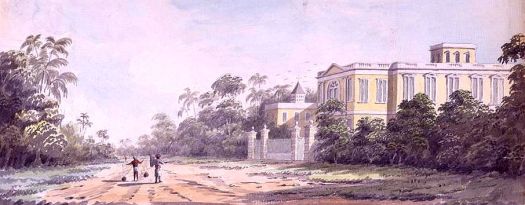
On 12 Feb 1915, Naren with two others looted the cash of Bird & Company in broad daylight in the Garden Reach area of Calcutta.
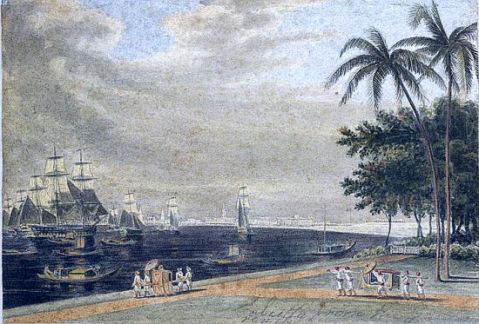
It gained notoriety as the sensational Garden Reach Political Dacoity. The operation was precisely planned and carried out coolly and efficiently. The whole action was completed within few minutes, at gun point, without having to fire a shot.
Naren was arrested a day or two later for his part in the dacoity. Soon thereafter, Jatin Mukherjee requested Purna Das, leader of the Faridpur outfit, to ask one of his men who had taken part in the dacoity and who also were arrested in the case to take the blame and plead guilty. Jatin convinced the Government lawyer Tarak Sadhu not to contest the bail petition of Naren. It is said; immediately after release on bail, Naren promptly committed some more dacoities and went underground.
By about this time, the war had broken out in Europe; and its reverberations were felt in the East. The outbreak of the First World War lent a different turn and twist to the activities of the revolutionary groups in India. They began looking towards Germany with hope and expectation for material and financial support to fight the British in India. The leaders of the revolution groups such as Jatin Mukherjee began discussions with the German Counsel General in Calcutta, as early as in 1913, about the possibilities of armed insurrections and guerilla warfare against the British with German support.
[By about 1915-16, Germany’s involvement with the Indian nationalist movement reached its climax; and , it also got massively involved in Afghanistan. Under the leadership of Baron Openheimer, the German Foreign office opened a special committee for the Orient (Turkey) and India. ]
Until the break of the War, the terrorist groups were securing funds and arms from within India. But, with the outbreak of the war , their efforts went global.
Let’s talk of such efforts and the special role that Narendra Nath played therein, in the next part.
Continued
In
Next Part

Sources and References
1, M N Roy by V B Karnik, National Book Trust, 1980
- M N Roy, A Political Biography by Samaren Roy
- Political Philosophy of M.N. Roy by Dr. Prakash Chandra, Sarup & Sons, 1992
- Numerous pages from Wikipedia
- All images are from Internet